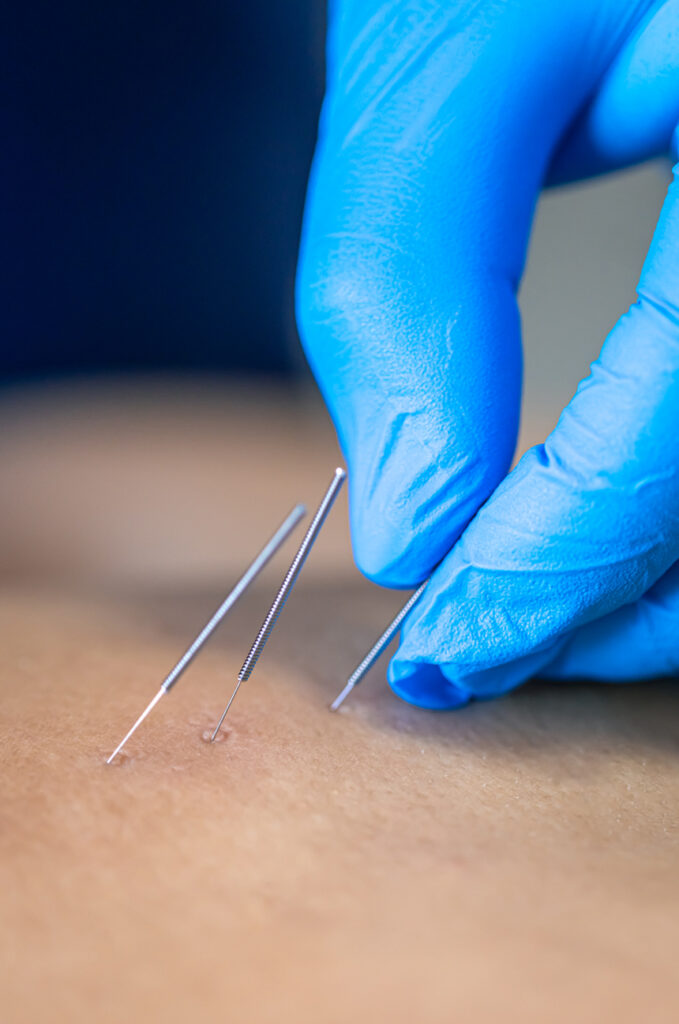
Comparing Dry Needling and Acupuncture: Key Differences in Recovery Techniques
Both dry needling and acupuncture are frequently used in post recovery, therapeutic settings to aid in pain management and recovery. Despite their similarities, dry needling and acupuncture are rooted in distinct traditions and apply different methods. While both involve inserting fine needles into the skin, their purposes, techniques, and underlying philosophies are quite different. Understanding these differences can help individuals choose the most appropriate treatment for their recovery needs. Action Physical Therapy offers dry needling and the results are amazing.
Philosophical Foundations
Acupuncture is an ancient practice from traditional Chinese medicine (TCM), developed over 2,000 years ago. It is based on the idea that the body’s energy, or “qi,” flows along specific pathways called meridians. According to TCM, imbalances or blockages in this energy can lead to illness or pain. Acupuncture aims to restore balance by placing needles at strategic points along these meridians to promote healing and reduce discomfort. Dry needling, in contrast, is a more recent technique derived from Western medical principles. It focuses on relieving musculoskeletal pain by inserting needles into trigger points, which are tight, irritated spots within muscles.
Methods and Goals
The way these two therapies are applied also highlights their differences. In acupuncture, needles are placed at specific points along the meridian lines associated with different health issues, whether physical or emotional. The goal is to stimulate the body’s natural healing mechanisms by improving energy flow. Dry needling, on the other hand, is primarily used for treating muscle-related problems. Needles are inserted directly into muscle knots or trigger points to reduce tension, improve circulation, and promote muscle repair. While acupuncture treatments are generally designed to address broader health concerns, dry needling is more targeted, often aimed at specific injuries or muscle pain.
Scientific Evidence and Applications
Both techniques are supported by research, though they are often applied to different kinds of conditions. Acupuncture has a long-established body of research supporting its effectiveness in managing chronic pain, stress, and conditions like migraines or digestive disorders. Dry needling, while newer, has shown promise in treating sports injuries, muscle strains, and other acute musculoskeletal conditions. While both methods can be beneficial for recovery, dry needling tends to be more effective in treating localized muscle pain, whereas acupuncture is better suited for a wider range of both physical and emotional ailments.
Patient Experience and Sensation
The sensations and experiences patients report during treatment vary between the two techniques. Acupuncture is often described as a gentle, relaxing process, with needles typically left in place for 20 to 30 minutes. Many patients experience a sense of calm or a mild tingling sensation. In contrast, dry needling can be more intense, as it targets painful trigger points within the muscles. Patients might experience a twitch response or mild soreness during and after the session, although these effects usually subside within a short period.
Selecting the Appropriate Treatment
When choosing between dry needling and acupuncture, it’s important to consider the specific nature of the condition being treated. Individuals dealing with chronic pain, stress, or broader health concerns may find acupuncture to be the better option due to its holistic approach. Conversely, athletes or those recovering from muscle injuries may prefer dry needling for its more focused and direct treatment of muscle pain and tension. Consulting with a healthcare provider who is familiar with both techniques can help guide the decision and ensure the most appropriate treatment is selected for optimal recovery.







